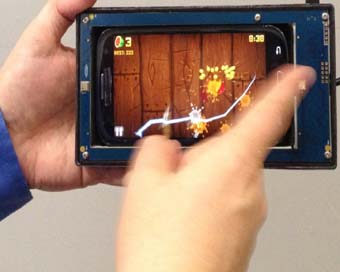 PM Modi visit USA
PM Modi visit USA Only the mirror in my washroom and phone gallery see the crazy me : Sara Khan
Only the mirror in my washroom and phone gallery see the crazy me : Sara Khan Karnataka rain fury: Photos of flooded streets, uprooted trees
Karnataka rain fury: Photos of flooded streets, uprooted trees Cannes 2022: Deepika Padukone stuns at the French Riviera in Sabyasachi outfit
Cannes 2022: Deepika Padukone stuns at the French Riviera in Sabyasachi outfit Ranbir Kapoor And Alia Bhatt's Wedding Pics - Sealed With A Kiss
Ranbir Kapoor And Alia Bhatt's Wedding Pics - Sealed With A Kiss Oscars 2022: Every Academy Award Winner
Oscars 2022: Every Academy Award Winner Shane Warne (1969-2022): Australian cricket legend's life in pictures
Shane Warne (1969-2022): Australian cricket legend's life in pictures Photos: What Russia's invasion of Ukraine looks like on the ground
Photos: What Russia's invasion of Ukraine looks like on the ground Lata Mangeshkar (1929-2022): A pictorial tribute to the 'Nightingale of India'
Lata Mangeshkar (1929-2022): A pictorial tribute to the 'Nightingale of India' PM Modi unveils 216-feet tall Statue of Equality in Hyderabad (PHOTOS)
PM Modi unveils 216-feet tall Statue of Equality in Hyderabad (PHOTOS)India Open Competition in Shotgun, organised by the National Rifle Association of India (N
- Hockey India names Amir Ali-led 20-man team for Junior Asia Cup
- Harmanpreet Singh named FIH Player of the Year, PR Sreejesh gets best goalkeeper award
- World Boxing medallist Gaurav Bidhuri to flag off 'Delhi Against Drugs' movement on Nov 17
- U23 World Wrestling Championship: Chirag Chikkara wins gold as India end campaign with nine medals
- FIFA president Infantino confirms at least 9 African teams for the 2026 World Cup
Controlling smartphones with touchless gestures Last Updated : 11 Feb 2017 06:09:07 PM IST 
(file photo) Cellphones and other devices could soon be controlled with touchless gestures and charge themselves using ambient light thanks to new LED displays that can both emit and detect light.
Made of tiny nanorods arrayed in a thin film, the LEDs could enable new interactive functions and multitasking devices.
"These LEDs are the beginning of enabling displays to do something completely different, moving well beyond just displaying information to be much more interactive devices," said lead researcher Moonsub Shim, a professor at University of Illinois at Urbana-Champaign.
"That can become the basis for new and interesting designs for a lot of electronics," Shim said.
The tiny nanorods, each measuring less than five nanometres in diametre, are made of three types of semiconductor material.
One type emits and absorbs visible light. The other two semiconductors control how charge flows through the first material. The combination is what allows the LEDs to emit, sense and respond to light.
The nanorod LEDs are able to perform both functions by quickly switching back and forth from emitting to detecting.
They switch so fast that, to the human eye, the display appears to stay on continuously, said the study published in the journal Science.
Yet the LEDs are also near-continuously detecting and absorbing light, and a display made of the LEDs can be programmed to respond to light signals in a number of ways.
For example, a display could automatically adjust brightness in response to ambient light conditions -- on a pixel-by-pixel basis.
"You can imagine sitting outside with your tablet, reading. Your tablet will detect the brightness and adjust it for individual pixels," Shim said.
"Where there's a shadow falling across the screen it will be dimmer, and where it's in the sun it will be brighter, so you can maintain steady contrast," Shim explained.
_
_SHOW_MID_AD__
For Latest Updates Please-
Join us on
Follow us on








172.31.16.186







